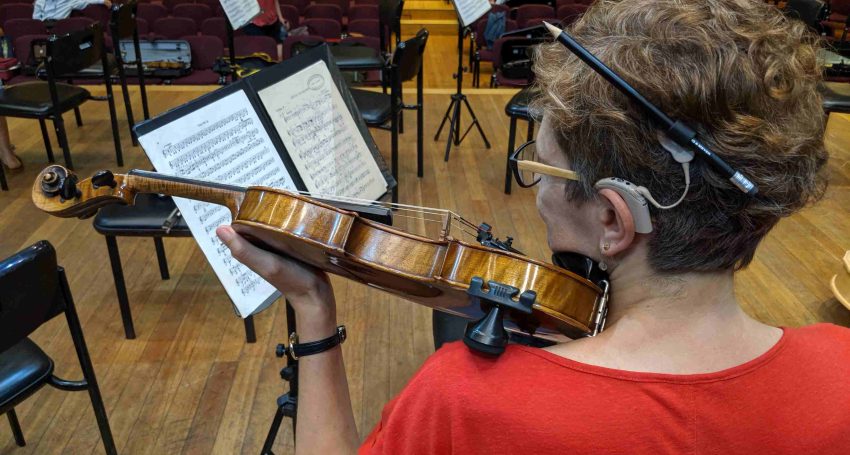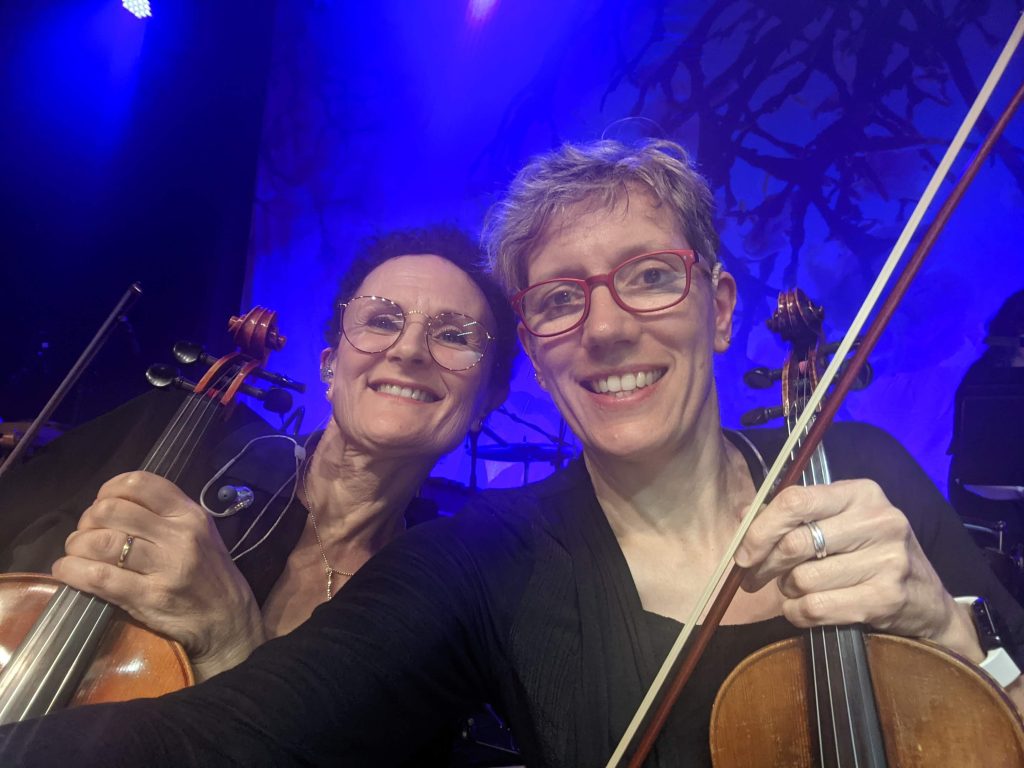Hearing in stereo again
Reflections
“Today my lithium ion rechargeable batteries are small and the CI connects to my phone via Bluetooth. I can choose to listen to podcasts with the audio sent directly to the implant, with no need for earbuds. There is a reason that the cochlear implant is also known as the ‘bionic ear’ — the technology is truly marvellous,” says Frances Thompson

My hearing gradually decreased in my left ear between 2000-2006, due to Meniere’s disease, which is one of those interesting conditions that doctors don’t really understand, except that it generally involves symptoms such as vertigo, nausea, dizziness, and sometimes causes increasing deafness.
Happily for me, the dizziness and nausea no longer affect me, but the deafness continued to get worse, so my audiologist suggested I consider a cochlear implant (CI) in 2018.
Advertisement
A cochlear implant can improve hearing by helping to fix the clarity of the words being heard. A hearing aid can only increase the volume, it can’t help when the person can’t work out if the word is “cat” or “bat” or “hat”.
I was reticent about a CI because I knew music could not be heard through a CI as effectively as speech, but as I had, by then, very little hearing in my left ear, a CI was going to be better than the hearing aid I was using in 2018, which was by then pretty useless.
I went ahead with the surgery, and when the external processor was fitted there was a lot of emotion in the room; at my switch-on I couldn’t distinguish words, or details, but I could definitely hear things.
My audiologist sounded like a high- pitched distorted robotic cartoon chipmunk with added helium. Walking across King George Square after the processor switch- on, the rain on my umbrella sounded like squealing piglets and the City Hall bells sounded like a wobble board. Back home, the microwave sounded like crashing waves.
Advertisement
After the surgery I undertook six months of intensive homework. Another device was used to send audio directly to the cochlear implant (so my “good” right ear couldn’t help), whilst I read the same words. Eventually my brain figured out that what I was hearing and what I was reading were the same.
I went straight back to singing in a choir, and playing violin in an orchestra, which were both exhausting as my brain tried to make sense of the sounds I was hearing. But over those first few months it got better, and after a year my hearing on the left side was fabulous. It wasn’t the same as my good hearing on the right, but pretty good.

A “deskie” selfie of Frances Thompson and her friend Maree in 2021 — Frances was playing violin for a performance with singer-songwriter Vera Blue and the Brisbane Symphony Orchestra at the Fortitude Music Hall
The external processor on the ear picks up the sound of a dog in the garden and turns it into an electrical signal, which travels through the coil into the implant inside the head, where the auditory nerve is stimulated, sending a message to the brain, where the electrical signal is turned back into sound, and the brain recognises the sound of a dog barking. Essentially the brain is replacing the damaged portions of the ear and doing the listening.
Related Story
 Books & Guides
Books & Guides
I want to fix ears
I knew someone in Hong Kong, decades ago, with a cochlear implant. The battery was attached to the behind-the-ear processor with a long wire, and the battery was so large (bigger than a mobile phone), that it was carried in a shoulder bag. Today my lithium ion rechargeable batteries are small and the CI connects to my phone via Bluetooth; I can choose to listen to podcasts with the audio sent directly to the implant, with no need for earbuds. There is a reason that the cochlear implant is also known as the “bionic ear” — the technology is truly marvellous. The implant inside my head will never be updated or changed, whereas the processor on the outside is updated and replaced every few years.

(L-R) Stephen Harrison, Frances Thompson and The Rev’d Sue Grimmett enjoying a cello practice session together on Thursday 29 April 2021 in the Cathedral Precinct’s St Martin’s House
I haven’t read Prof Graeme Clark’s book, I Want to Fix Ears: Inside the Cochlear Implant Story yet, but what I know of his story is that it is an inspirational one.
I know that there are those in the deaf community who don’t want “fixing”, and who use sign language, and that works for them. Plenty of deaf people would not be suitable for implantation, as an audiologist needs to assess if an individual has the capability to be able to hear again. A CI won’t work for everyone with hearing loss. Plus, you need to be prepared to do the homework — to teach your brain to do the hearing. But there will be plenty of people like me, who have experienced hearing loss in just one ear and who have received a large part of their hearing back again, after implantation. It’s not perfect, it’s not as good as my regular, original hearing was, but it’s pretty good and gives me the ability to hear in stereo again.





